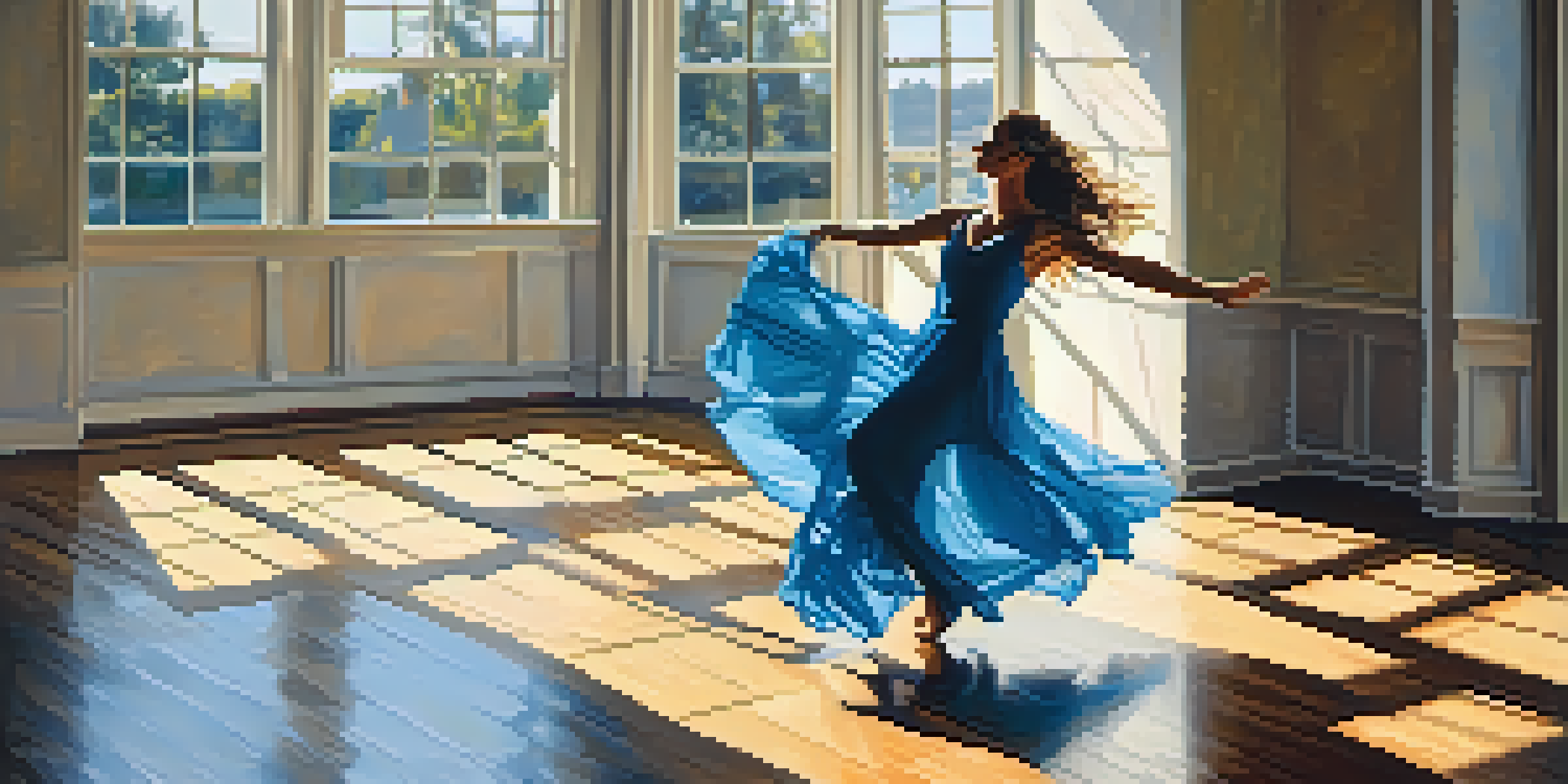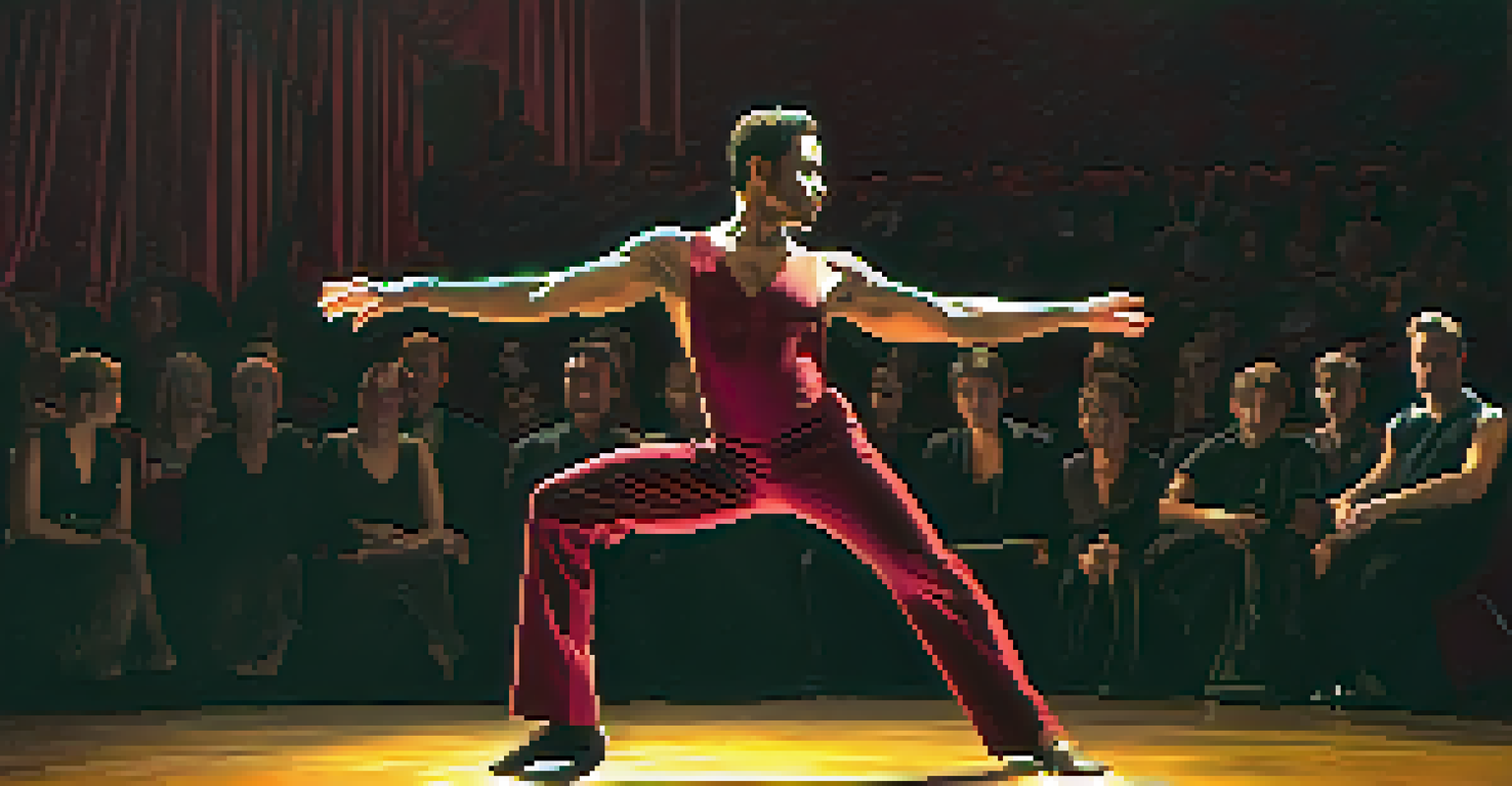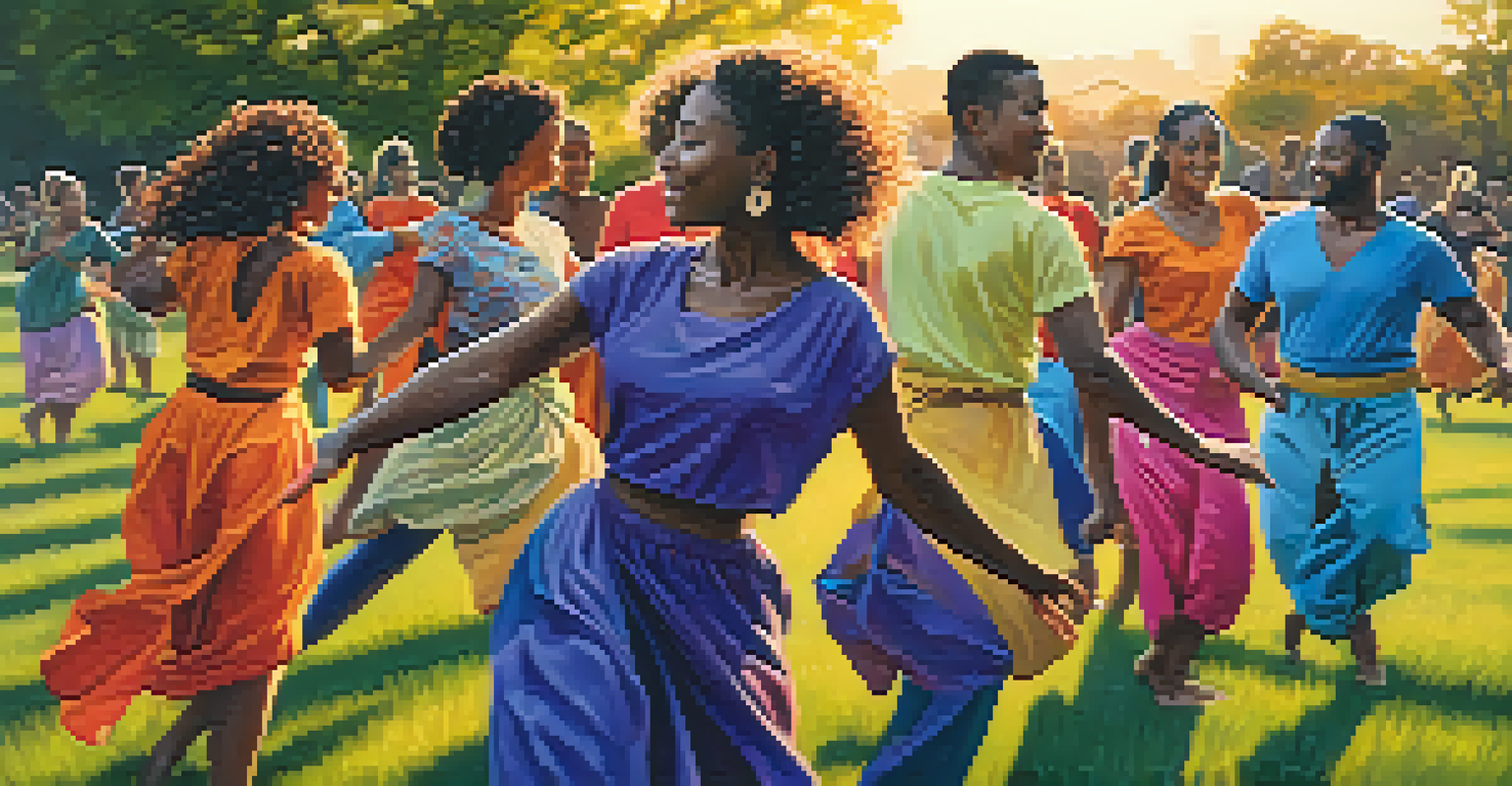Improvisation and Emotional Expression in Dance

Understanding Improvisation in Dance
Improvisation in dance is the spontaneous creation of movement without pre-planning. It's like jazz music, where dancers respond to the rhythm and vibes around them. This practice encourages dancers to let go of rigid structures and embrace creativity, allowing for unique expressions in each performance.
Dance is the hidden language of the soul.
By relying on instinct rather than choreography, dancers can explore their inner thoughts and feelings through movement. This approach fosters a deep connection between the body and mind, making the dance experience more personal and fulfilling. Improvisation invites spontaneity, creating a fresh atmosphere in every session.
Moreover, improvisation can be a powerful tool for self-discovery. As dancers explore different movements, they often unearth emotions and experiences they might not have been aware of. This journey can lead to transformative moments that enhance both their dance and their emotional well-being.
The Role of Emotion in Dance
Emotion plays a pivotal role in dance, serving as the driving force behind a dancer's movements. Just like a painter uses colors to express feelings, dancers use their bodies to convey emotions. This connection transforms dance into a powerful medium of storytelling, allowing audiences to relate on a deeper level.

Different dance styles evoke different emotions. For instance, a passionate tango can express longing, while a lively salsa might convey joy and celebration. By tapping into these emotions, dancers create a rich tapestry of experiences that resonate with viewers.
Improvisation Enhances Dance Expression
Improvisation allows dancers to create spontaneous movements that reflect their emotions, fostering a deeper connection with both their art and the audience.
Furthermore, the ability to express emotion through dance can be liberating for the performer. It allows individuals to channel their feelings in a constructive way, turning pain, joy, or even confusion into art. This cathartic experience not only enhances the performance but also promotes mental health and emotional resilience.
Connecting Improvisation and Emotion
The intersection of improvisation and emotion in dance creates a dynamic landscape for exploration. When dancers improvise, they often draw from their emotional state, leading to authentic and spontaneous performances. This synergy allows for a deeper exploration of feelings, making each movement a reflection of the dancer's current emotional experience.
Improvisation is the ability to be spontaneous and to live in the moment.
For example, a dancer feeling joy might move with lightness and agility, while one experiencing sadness might adopt slower, heavier movements. These emotional cues not only enrich the dance but also create a powerful connection with the audience, who can sense and relate to the emotions being expressed.
Ultimately, this connection invites both dancers and viewers to engage in a shared experience. It fosters empathy and understanding, as audiences witness the raw expression of human emotions through dance. This bond transforms a performance into a communal event, where feelings are felt collectively.
Techniques to Enhance Improvisation
Dancers can enhance their improvisational skills through various techniques. One effective method is to engage in open floor sessions where dancers are encouraged to move freely without specific guidelines. This freedom allows for a natural expression of emotions and movement, fostering creativity.
Another technique is to use prompts or themes as inspiration during improvisation. These could range from a specific emotion, like happiness or anger, to a physical sensation, such as warmth or weight. By focusing on these cues, dancers can tap into their emotional landscape and create movements that authentically express those feelings.
Emotion Drives Dance Storytelling
Emotion is crucial in dance, as it transforms movements into powerful narratives that resonate with viewers on a personal level.
Lastly, practicing mindfulness can significantly improve improvisational abilities. By being present in the moment and aware of their surroundings, dancers can respond more genuinely to their emotions and the energy of the space. This heightened awareness leads to more authentic expressions and a richer dance experience.
The Impact of Environment on Emotional Expression
The environment in which a dancer performs can greatly influence emotional expression. A bright, open space may evoke feelings of joy and freedom, while a dim, enclosed area might inspire introspection and melancholy. This relationship between space and emotion is crucial for creating impactful dance performances.
Moreover, the presence of an audience can also shift a dancer's emotional expression. The energy of the crowd can either uplift a dancer, enhancing feelings of joy, or create tension, leading to a more somber performance. Understanding this dynamic allows dancers to adapt their improvisation to suit the atmosphere.
Dancers can also take advantage of different environments during practice sessions. By exploring various settings, they can experiment with how different spaces affect their emotional expression and movement. This exploration not only enhances their improvisation skills but also deepens their understanding of the dance's emotional potential.
Cultural Influences on Dance and Emotion
Cultural backgrounds significantly shape how emotions are expressed in dance. Different cultures have unique dance styles, each with its own set of emotional narratives. For example, traditional African dance often emphasizes community and joy, while ballet might convey more personal, introspective emotions.
These cultural influences also affect improvisational techniques. Dancers from different backgrounds may approach improvisation with varying levels of structure, freedom, or emotional expression. Understanding these differences enriches a dancer's repertoire and broadens their emotional range.
Cultural Influences Shape Dance Styles
Cultural backgrounds play a significant role in how emotions are expressed and interpreted in dance, enriching the overall experience for both dancers and audiences.
By incorporating diverse cultural elements into their improvisation, dancers can create a fusion of styles that express complex emotions. This blend not only enhances their own dance experience but also introduces audiences to a richer tapestry of emotional storytelling through movement.
The Journey of Continuous Growth in Dance
The journey of mastering improvisation and emotional expression in dance is a lifelong process. Dancers continually evolve, discovering new ways to connect with their emotions and express them through movement. Each performance is an opportunity to learn and grow, which adds depth to their artistry.
Moreover, this journey encourages collaboration among dancers. Sharing experiences, feedback, and techniques can lead to new insights and enhance each individual's improvisational skills. This sense of community fosters a supportive environment where dancers can thrive together.

Ultimately, the exploration of improvisation and emotional expression in dance not only enriches the dancer's experience but also deepens the connection with their audience. As they embrace this journey, they continue to inspire others through their artistry and emotional authenticity.